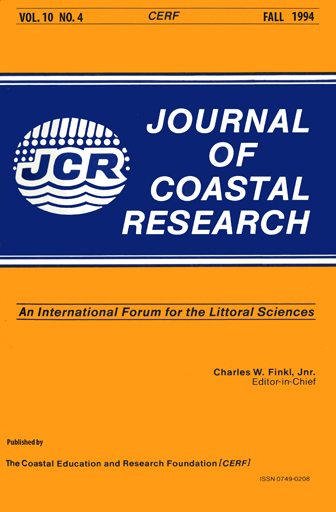Stratigraphic Evidence for Great Subduction-zone Earthquakes at Four Estuaries in Northern Oregon, U.S.A.
Keywords:
Coastal wetlands, paleoseismology, Cascadia subduction zone, great subduction zone earthquakes, tsunamis, OregonAbstract
Four estuaries (Necanicum, Nestucca, Siletz, and Yaquina), located on the northern Oregon coast and within the central Cascadia subduction zone, record evidence of peats that were buried during coseismic subsidence and postseismic deposition of tsunami sands and estuarine sediments as a result of great subduction zone earthquakes (magnitudes greater than 8). The identification of great earthquakes in these estuaries complements similar evidence in other estuaries in northern Oregon. The same number of burial events (6) are found within the top 3 m and within approximately the last 2,800 14C years in at least seven estuaries on the northern Oregon coast.
Unequivocal evidence for great earthquakes could not be provided for all buried peats identified in the stratigraphic record. The stratigraphic records of buried peats vary because of differences in morphology, sediment supply, wetland surface elevations, and preservation potential within and among estuaries. However, consistent records of abrupt subsidence and corresponding tsunami deposition are observed in each of the estuaries, confirming the potential for great earthquakes along the northern Oregon coast. Wetland sites that record the best history of earthquakes are those with 1) elevations that are low enough to document rapid environmental changes that are easily recognized in the stratigraphic record, 2) an adequate sediment supply that allows wetlands to redevelop after coseismic subsidence, 3) locations that are in the path of sand-laden tsunami surges, and 4) locations that are away from migrating channels which erode the geologic record.


